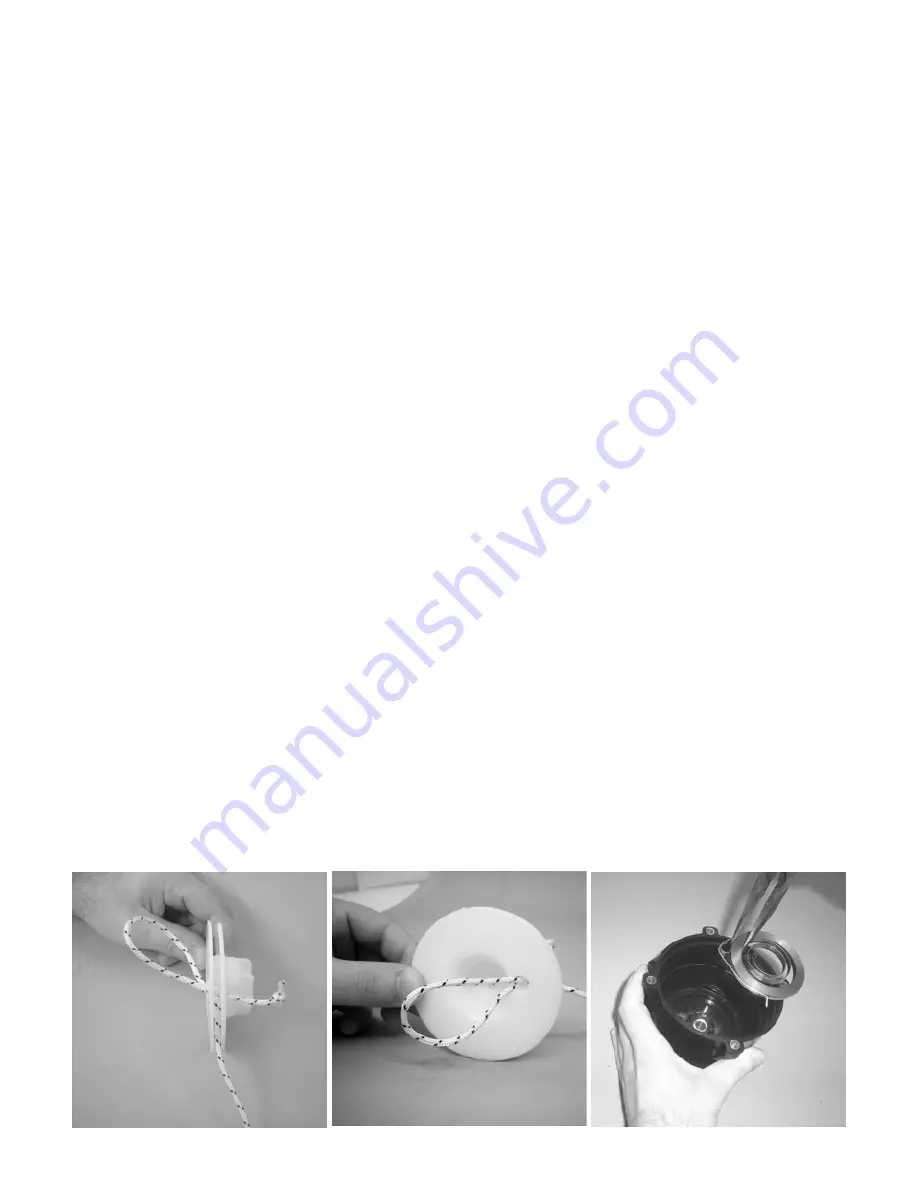
11
6.1 - USE, TECHNIQUES AND PRECAUTIONS
- If just a few splashes of water get in, this water will remain in the bottom hollows
inside the air tank without causing damage.
However, it is advisable to empty
out any water as soon as you get back to the beach.
-
It’s an entirely different matter if a large amount of water flows quickly
into the snorkel
. This happens in particular if the end of the snorkel becomes
submerged, causing a mass of water to suddenly flow in and stop the engine
immediately.
The water must be emptied out as soon as possible, or the
engine will be irreparably damaged.
SOLUTION !
Drain any water out of the tank immediately. Then drain the machine
completely in the following way.
1) Shut off the fuel valve (OFF - CLOSED - CHIUSO).
2) Unscrew the snorkel and the spark plug.
3) Turn the aquascooter upside down and pull the starter repeatedly (as many
as 8 times) until all the water has been drained out of the engine. This is the only
way to avoid the damage to the internal parts of the engine through rust. After
this,replace the spark plug and open the fuel valve again (APERTO -OPEN - ON).
4) Now attempt to start the engine according to the normal procedure; if the
machine fails to start, clean or replace the spark plug. Start the motor again using
the cold start procedure.
It is important to get the engine started and to then
get into the water and use the aquascooter for at least 10 minutes
.
WARNING - If the engine has stopped because water has got into the snorkel,
and after repeatedly draining the engine and attempted starts you cannot
get it to re-start, it is advisable to unscrew the spark plug, fill the cylinder
with the oil used in the mixture (20 ml) and to pull on the starter cord slowly
2-3 times. Then contact your nearest Aquascooter Service Centre within 48
hours.
Starter rope and spring replacement.








































